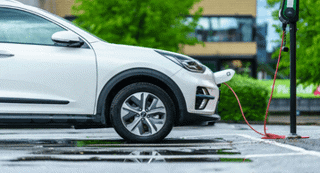In today’s challenging business climate, cost control is the number one concern for most companies and, given the size of most fleet budgets, it is no surprise it’s the main issue faced by all fleet managers.
But whilst fleet management companies can assist in creating cost efficient fleet policies and determining an optimum-funding route for them, the need to manage the costs ‘on the road’ remains. More and more forward thinking companies, therefore, are now turning to telematics, recognising the crucial role it can play in cutting operating cost. And, of all these costs, fuel spend is the one that can deliver the greatest savings.
According to the Fleet 200 Report published by Sewells (January 2011) the largest 200 fleets in the UK across ten-industry sectors spent £1.2b pa on fuel spend alone last year. What that figure might be at the close of this year is anybody’s guess but one thing is for certain, if a fleet can achieve a fuel saving of 10%, that’s a huge figure in anyone’s budget.
But to manage fuel spend fleet managers need to know more about their fleet's movement, not just how far their vehicles are travelling but how they’re being driven too. Accurate mileage capture has, for a long time, been the holy grail of ‘best practice’ fleet management – not just for correct reimbursement of fuel cost but also to have greater visibility of potential private mileage abuse or unauthorised driving. The logic is simple: fewer miles, lower cost.
Telematics also has the functionality of being able to record and report on particular driving styles - whilst on these journeys – most likely to impact on cost e.g.where a driver leaves their vehicle ‘idling’ or drives at excessive speeds - or even harsh braking and acceleration. All of these scenarios contribute to increased fuel consumption.
Telematics will help the fleet manager identify which drivers are most likely to be a greater ‘cost’ or ‘risk’ to their business – and highlight in what areas they could improve either by targeted driver training or by just having a quiet word.
Where telematics has occasionally received ‘bad press’ in the past – with the negative perception of ‘big brother’ - this has, quite understandably, caused many companies to dismiss the benefits of the technology without further investigation.
Driver ‘privacy’ has long been an issue many have been concerned about. Acknowledging these concerns, however, the key is to offer an online consent process to ensure the only ‘driver’ information their fleet manager can see is data the drivers are happy to ‘release’. Visibility of ‘business journeys’ only - rather than private journeys outside office hours is one way of ensuring a positive driver response.
What’s important to the successful implementation of telematics is the ‘buy-in’ from drivers whose vehicles are fitted with telematics whatever the company’s key driver is, whether for cost, legal or moral reasons. I think that we are now seeing a sea change in attitudes from drivers and businesses alike with regards to telematics. With fleet costs increasing; the time has arrived for telematics.






















benkinsella - 06/06/2011 16:41
To summarise: "Accurate mileage capture has, for a long time, been the holy grail of ‘best practice’ fleet management." "Driver ‘privacy’ has long been an issue many have been concerned about." Why then do all telematics service providers continue to use GPS? There is a better way to capture mileage ...